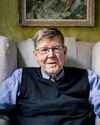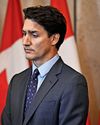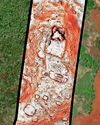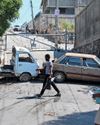
For 10 months in Kuwait, everything was upside down. Daytime was full of darkness from thick smoke, and the nights were bright from the distant glow of burning oilwells. When Iraq’s leader, Saddam Hussein, ordered the occupation of Kuwait in August 1990, in a bid to gain control over the lucrative oil supply of the Middle East and pay off a massive debt accrued from Kuwait, he was forced into retreat by a US coalition, which began an intensive bombing campaign.
As Iraqi forces pulled out, they set more than 700 oil wells ablaze. Thirty years on, Kuwait is still scarred by one of the world’s worst environmental catastrophes – and the billions set aside for remediation are still waiting to be spent. “The sound of gushing oil and roaring fires is still in my memory,” says Samira Omar Asem, the principal research scientist at the Kuwait Institute for Scientific Research (Kisr).
The wells burned uncontrollably. The smoke plume above them stretched for 1,300km, and 11m barrels of crude oil poured into the Gulf, creating a slick 15km long. Nearly 300 oil lakes formed on the desert surface. An international coalition of firefighters battled for months until the last well was capped on 6 November 1991 and Kuwait celebrated under a clear sky.
This story is from the {{IssueName}} edition of {{MagazineName}}.
Start your 7-day Magzter GOLD free trial to access thousands of curated premium stories, and 9,000+ magazines and newspapers.
Already a subscriber ? Sign In
This story is from the {{IssueName}} edition of {{MagazineName}}.
Start your 7-day Magzter GOLD free trial to access thousands of curated premium stories, and 9,000+ magazines and newspapers.
Already a subscriber? Sign In

Finn family murals
The optimism that runs through Finnish artist Tove Jansson's Moomin stories also appears in her public works, now on show in a Helsinki exhibition

I hoped Finland would be a progressive dream.I've had to think again Mike Watson
Oulu is five hours north from Helsinki by train and a good deal colder and darker each winter than the Finnish capital. From November to March its 220,000 residents are lucky to see daylight for a couple of hours a day and temperatures can reach the minus 30s. However, this is not the reason I sense a darkening of the Finnish dream that brought me here six years ago.

A surplus of billionaires is destabilising our democracies Zoe Williams
The concept of \"elite overproduction\" was developed by social scientist Peter Turchin around the turn of this century to describe something specific: too many rich people for not enough rich-person jobs.

'What will people think? I don't care any more'
At 90, Alan Bennett has written a sex-fuelled novella set in a home for the elderly. He talks about mourning Maggie Smith, turning down a knighthood and what he makes of the new UK prime minister

I see you
What happens when people with acute psychosis meet the voices in their heads? A new clinical trial reveals some surprising results

Rumbled How Ali ran rings around apartheid, 50 years ago
Fifty years ago, in a corner of white South Africa, Muhammad Ali already seemed a miracle-maker.

Trudeau faces 'iceberg revolt'as calls grow for PM to quit
Justin Trudeau, who promised “sunny ways” as he won an election on a wave of public fatigue with an incumbent Conservative government, is now facing his darkest and most uncertain political moment as he attempts to defy the odds to win a rare fourth term.

Lost Maya city revealed through laser mapping
After swapping machetes and binoculars for computer screens and laser mapping, a team of researchers have discovered a lost Maya city containing temple pyramids, enclosed plazas and a reservoir which had been hidden for centuries by the Mexican jungle.

'A civil war' Gangs step up assault on capital
Armed fighters advance into neighbourhoods at the heart of Port-au-Prince as authorities try to restore order

Reality bites in the Himalayan 'kingdom of happiness'
High emigration and youth unemployment levels belie the mountain nation's global reputation for cheeriness